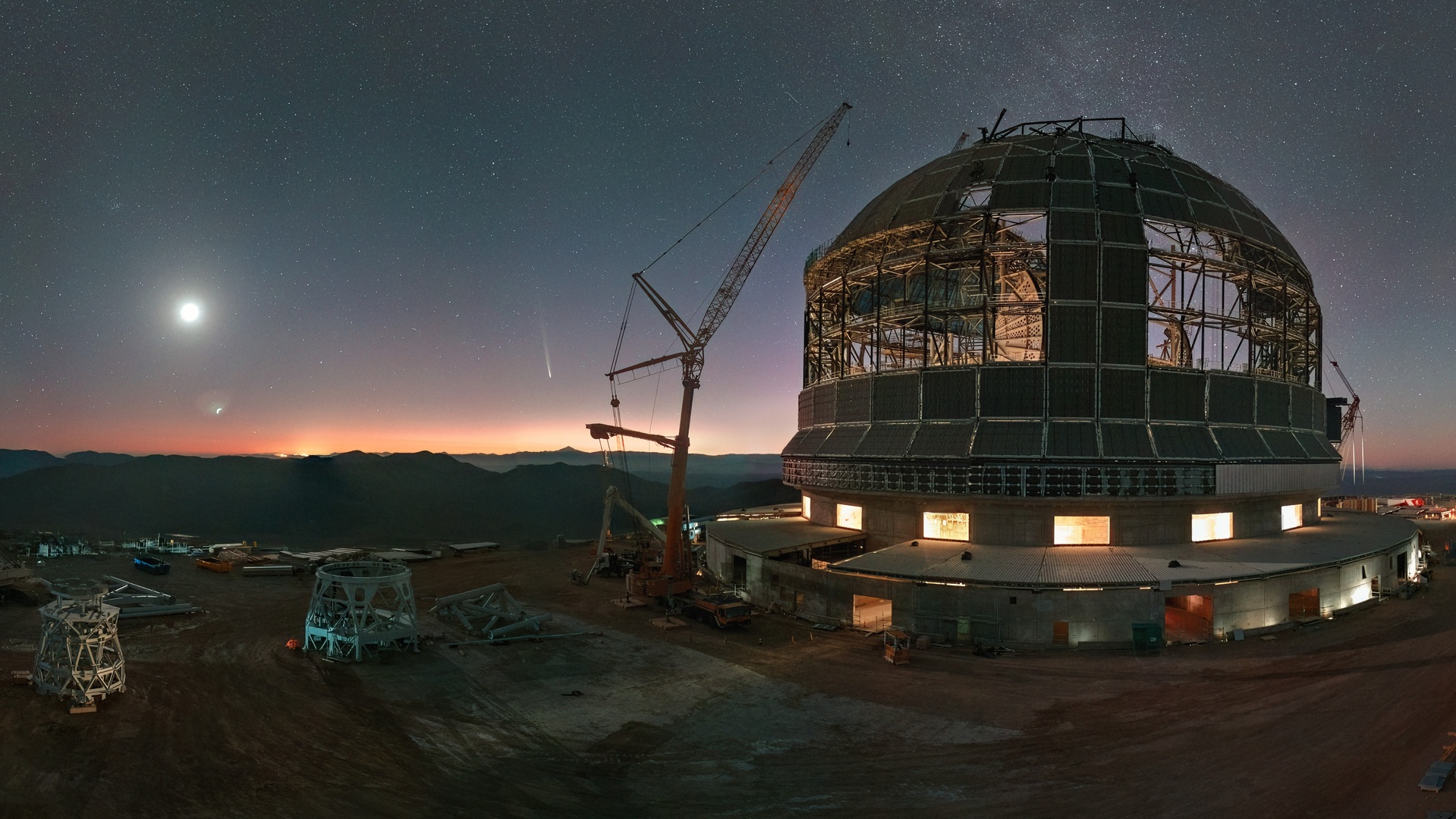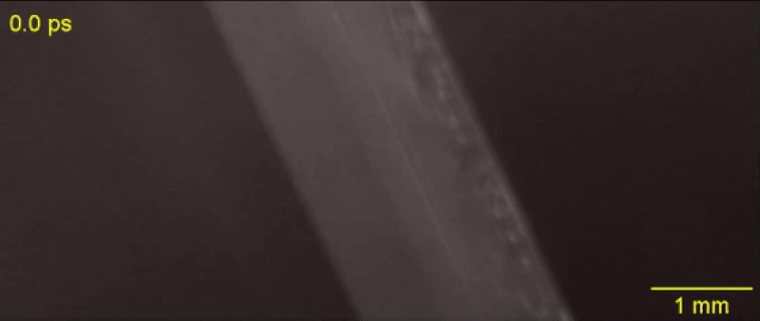Ask Ethan: Why doesn’t Earth’s atmosphere turn sunlight into rainbows?
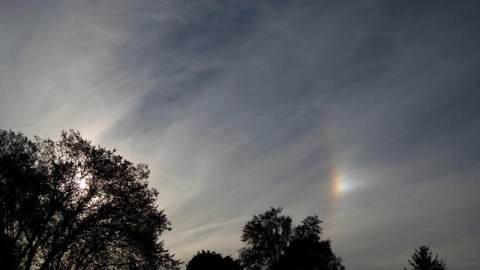
If a prism can do it, why not the air?
“It’s a brilliant surface in that sunlight. The horizon seems quite close to you because the curvature is so much more pronounced than here on earth. It’s an interesting place to be. I recommend it.” –Neil Armstrong
Sunlight may be the bright, warming glow that heats and powers the Earth, but it’s so much more than that. If you pass sunlight through a prism, you can see how it’s actually composed of all the different wavelengths of visible light, from violet to red. If you had extended vision, you could see that ultraviolet and infrared radiation were part of that, too. Seeing that sunlight is composed of the full spectrum of colors doesn’t even require anything human-made, as properly oriented water drops can create this “rainbow” effect completely naturally. So why doesn’t Earth’s atmosphere do it on its own? That’s the question posed by Richard Harris, who wants to know:
I wondered why white light passing through the Earth’s atmosphere doesn’t separate into the colours of the rainbow. Is it because air is too diffuse and there is insufficient distance of travel when the sun is overhead? When the sun is close to the horizon, so that there is a greater distance to be traversed, it appears to be red. Would the other colours be visible from increasing altitude of the observer?
To understand why light behaves as it does, let’s start with the example of the prism.
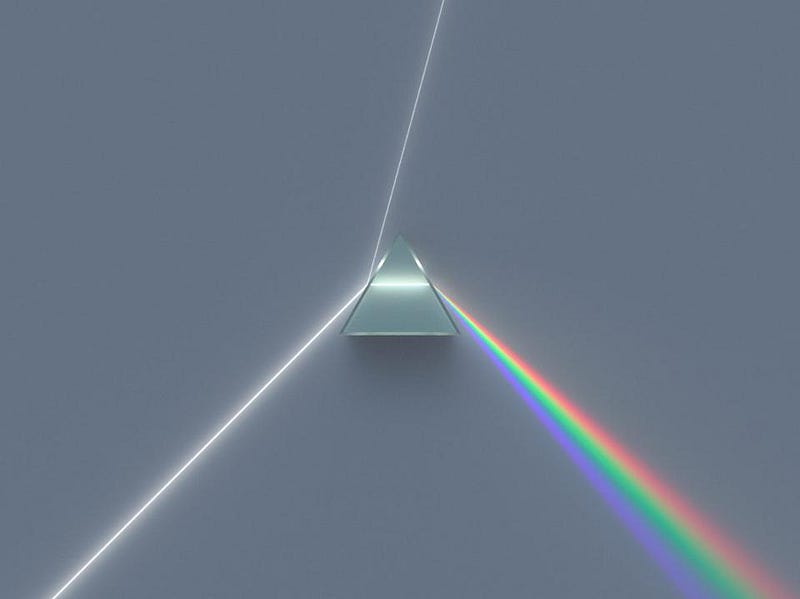
When light — not just sunlight, but light of any type — passes through a medium, its speed changes. The speed of light may be a universal constant (c, or 299,792,458 m/s), but that’s only true if it’s moving through a vacuum. If you instead pass light through a medium, which is anything made of particles, including air, water, glass, acrylic, quartz, etc., light travels at a slower speed. Because of conservation laws, that light is required to bend at an angle when it enters the medium at an angle.
But light also comes in different colors because the individual photons, the quanta of light, have different energies from one another. When light goes from vacuum to a medium, the different wavelengths respond slightly differently: violet light bends more severely and moves more slowly in a medium; redder light bends less severely and moves less slowly than the violet light. This process is known as refraction.
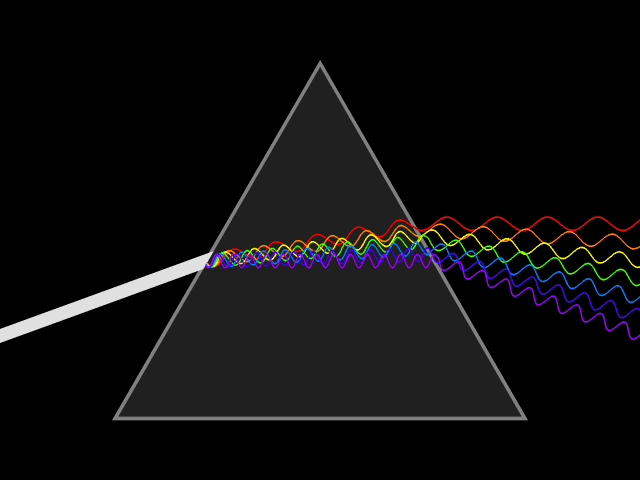
When there are large differences between the speed of light in a vacuum and the speed of light in a medium, the colors separate easily. In water, the speed of light is only 75% of what it is in vacuum, which is why water drops can create rainbows so easily. Ice is nearly the same: 76%, which is why you’ll sometimes see irregular rainbows occurring in high altitude clouds, owing to the hexagonal plate crystals which form up there. In a glass or acrylic prism, the speed of light is approximately 66% of what it is in vacuum, which is why shining sunbeams through them separates them into colors so easily. But in air — like Earth’s atmosphere — the speed of light is still 99.97% of what it is in vacuum. Nevertheless, if you fly up in an airplane at high altitudes and look to the horizon in either the pre-sunrise or post-sunset sky, you’re likely to see the full spectrum of colors.
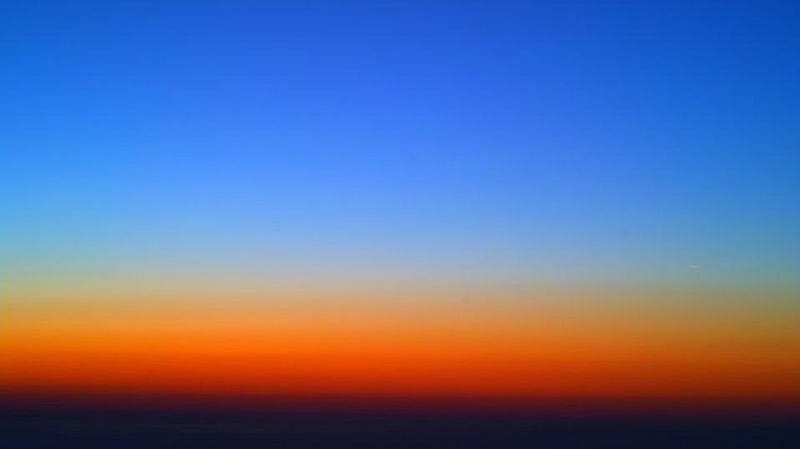
It’s not, however, due to the phenomenon of refraction! Instead, a different optical phenomenon known as scattering is what’s at play. Air isn’t just a continuous medium, but is instead made up of particles like atoms, molecules, droplets and grains of dust. Most of the particles present are very small, and so they preferentially scatter away light whose wavelengths are small: violet/blue light, rather than red light. This is why the sky appears blue during the day, as the bluer light from the Sun gets scattered to all regions of the sky, where our eyes can pick them up. At sunset, the blue light is mostly scattered away, while the red light successfully makes it through, turning the sky (and the Sun) red.
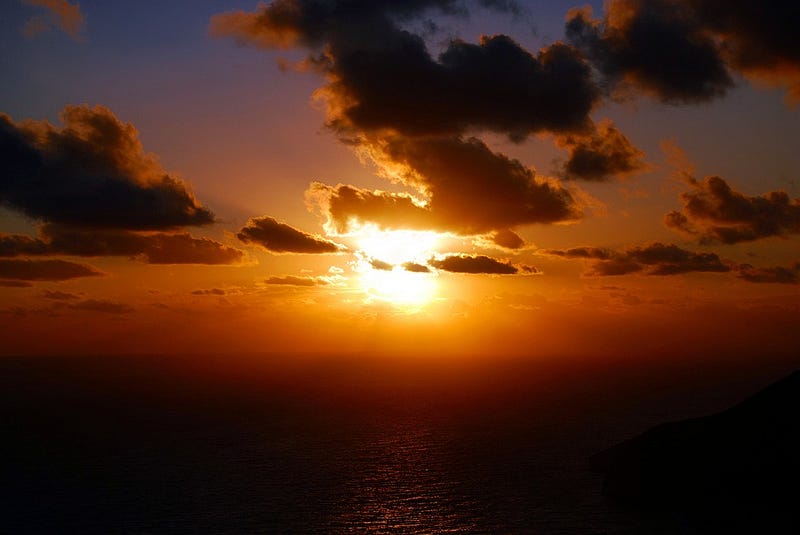
This can even be seen during a total lunar eclipse, where the full Moon, passing through the Earth’s shadow, turns red. The sunlight that filters through the Earth’s atmosphere and makes it to the Moon’s surface gets reflected back to Earth, but it’s almost 100% red light. Practically all of the blue light has been scattered away by the large amounts of atmosphere it had to pass through en route.
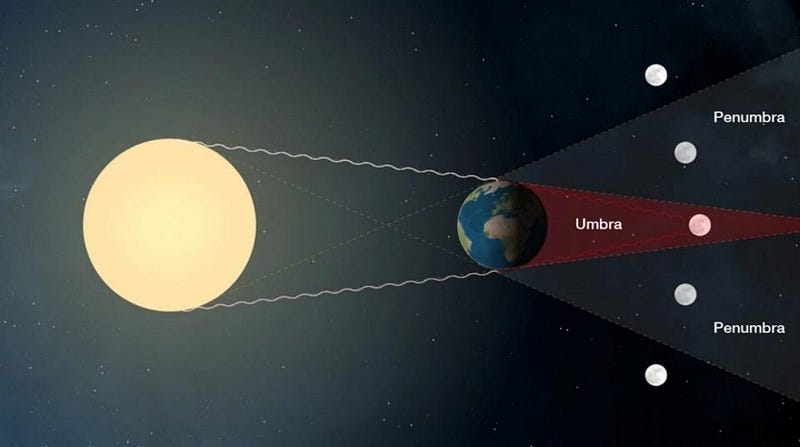
Even though air is such a lousy medium for refracting light — the fact that light still travels at 99.97% of its vacuum speed ensures that — there is one careful configuration that can result in the atmosphere splitting sunlight (or moonlight) into its rainbow components. Just at the moment of sunrise/sunset (or moonrise/moonset), that white light has to pass through the greatest amount of atmosphere, encountering it at the steepest angle possible. While the majority of the bluer light (violet, blue, green, etc.) gets scattered away, a small amount will make it through. The bluer the light, the more bent it is, ever so slightly, due to the atmosphere. Red light, on the other hand, is bent just a little bit less. And as a result, atop the distorted, discolored orb of either the Sun or the Moon, you can sometimes see a little extra “flash” of green or even blue light, while below you might see a little extra red.
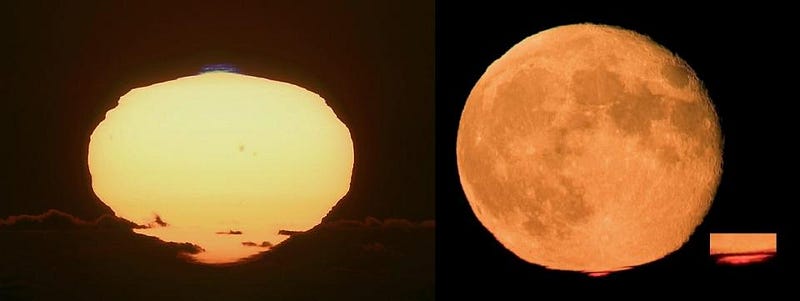
This subtle effect is as close to atmospheric refraction as you’re going to get on Earth. If the air were denser, if the atmosphere were thicker or it had a different, higher-molecular-weight composition, the index of refraction could be higher (and the speed of light would be lower), and we might see a greater rainbow-like effect. But with the speed of light in air achieving 99.97% of its vacuum value, that tiny, 0.03% deviation is all we have to cause the rainbow-like separation you’re looking for. When water drops are ubiquitous and the angle is just right, rainbows can abound, but that’s due to the water, not the air.
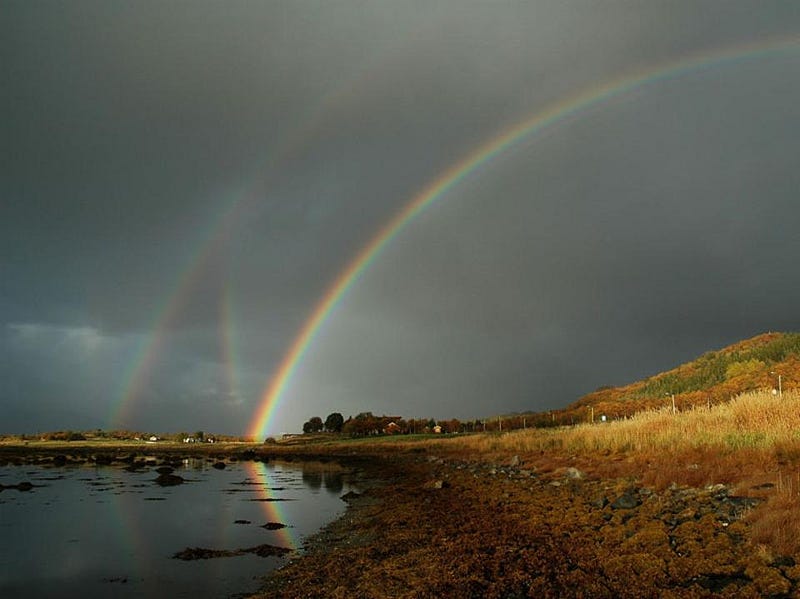
Instead, most of the atmospheric coloration effects that we see are due to scattering, with blue light scattered easily and red light less easily. It turns the sky blue and the setting or rising Sun/Moon red, with a nice gradient often visible under the right conditions. If the atmosphere were made of benzene gas instead of air, the refractive properties would be six times as great as they are, and you might actually get your rainbow separation during sunrise/sunset or moonrise/moonset. But if you want to separate your colors, your best bet is to use a higher index of refraction. Like Dolly Parton always said, “The way I see it, if you want the rainbow, you gotta put up with the rain.”
Send in your questions and suggestions to startswithabang at gmail dot com!
This post first appeared at Forbes, and is brought to you ad-free by our Patreon supporters. Comment on our forum, & buy our first book: Beyond The Galaxy!


